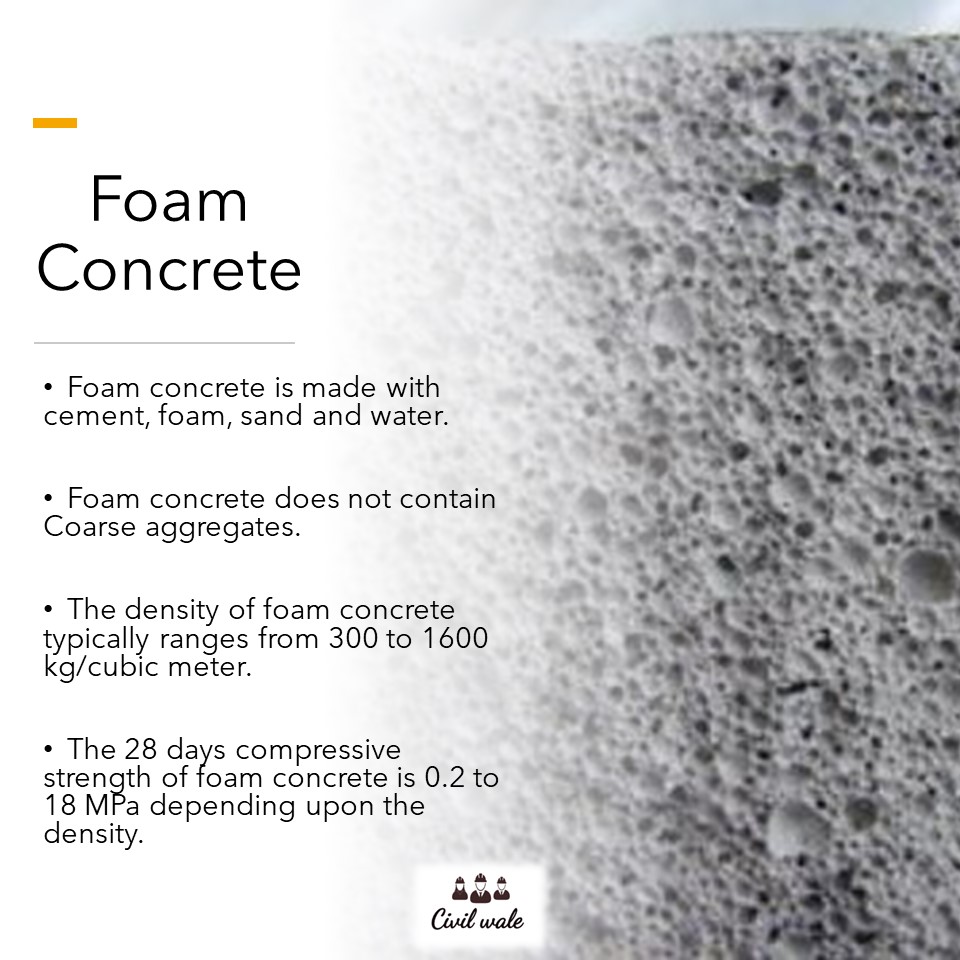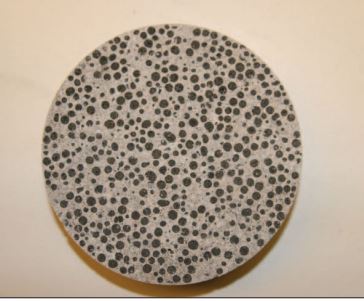Foam concrete is a type of lightweight concrete. The density of the concrete can be reduced by introducing stable voids in hardened cement paste. The voids can be introduced by air or by gas. In this concrete, a foaming agent introduces air, so it is called foam concrete.
- Foam concrete generally has low density ranges from 300 to 1600 kg/cubic meter, which helps to reduce the dead load of the structure.
- Compressive strength of foam concrete ranges from 0.2 to 18 MPa.
- Textural surface and mono-structural cells make it widely used in the fields of the thermal insulation, sound absorbance and fire resistance.
- This is also called as low-density concrete or self-compacting concrete.
Raw Materials used in the manufacturing of Foam Concrete
- Form concrete is manufactured using cement, sand or fly ash, water and a foaming agent.
- The foaming agent can be natural or synthetic.
- The tannic extracts of the leather industry, sub soaped lye, sulfite lye are some natural foaming agents used.
- Natural foaming agents have varying properties. So, Synthetic foaming agents can be produced with required properties.
Manufacturing Process of Foam Concrete
The cement, sand and water are mixed together and slurry is kept in a buffer tank. It should be continuously stirred to avoid segregation.
The Foaming agent and water are mixed separately in a specialised foam production equipment. The compressed air is supplied according to the amount of foam required.
This foam is then injected in the slurry to make foam concrete. These cement-based mortar contain a minimum of 20% of foam.
Advantages of Foam Concrete
- It has a lightweight. It imposes little vertical stress on the surrounding sub-structure.
- It has low thermal conductivity and good sound insulation properties which are not available in ordinary concrete.
- It has excellent freeze and thaws resistance.
- Foam concrete is a free-flowing concrete and can be placed without compaction. When placing in foundation or excavations, foam concrete conforms to every subgrade contour.
- Foam concrete can be pumped easily with relatively low pressure over a long distance.
- Foam concrete is very long-lived material. It does not decompose and it is as durable as rock.
- Foam concrete has a low coefficient of permeability.
Disadvantages of Foam Concrete
- With a decrease in the density of foam concrete, its compressive and flexural strength decrease.
- Foam concrete has a relatively high paste content and no coarse aggregate, it will shrink more than normal concrete.
- Since it has higher cement content than normal concrete. So it becomes costly
- The durability of foam concrete mainly influenced by the ratio of the connected pore to total pore.
- Mixing time of foam concrete is longer.
The reduced dead weight of the structure leads to cost-saving in the construction of structural frames and foundations. It also does not require compaction. It can fill the voids and cracks travelling over a long distance. It has good freeze/thawing
properties and good thermal insulation.
So, Foam concrete can be adopted as an alternative construction material.
Also Read: Self-Healing Concrete


